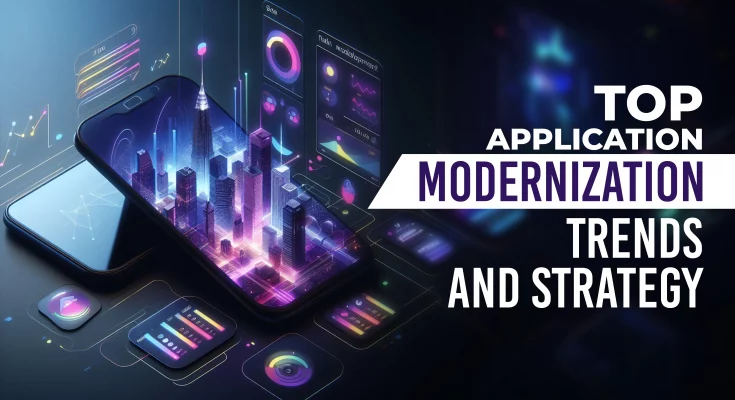You have created your mobile application but there you see an issue that you are not getting your target audience. However, you need to integrate an effective go-to-market strategy for mobile apps.
Recent studies show that the vast majority of mobile apps, around 99.5%, don’t end up being successful. One of the main reasons for this is the struggle to get noticed, with nearly 68% of apps failing to even reach 1,000 downloads. (Source: Zippia)
To avoid becoming another statistic, it’s essential to have a solid plan for launching your app. While having a great app is crucial, more is needed if people know about it. That’s where a go-to-market strategy comes in.
In this blog, we will discuss developing a go-to-market strategy for mobile apps that will be specifically tailored for you. This strategy will help you get your app the attention it deserves and increase your chances of success in the competitive mobile app market.
Table of Contents
What is a Go-to-Market Strategy?
A go-to-market strategy for mobile apps is like a playbook for launching your application effectively. It is a plan that frames how you will introduce your mobile app to the market with the best possible results.
Just like companies use strategies to sell physical products, you can use a go-to-market strategy for mobile apps. This plan helps you figure out what to say about your app, how to promote it, how to test it out, and how to launch it successfully.
So, think of a go-to-market strategy framework that will be your guide to getting your app into the hands of your potential users. It will make a great impression right from the start.
What to Include in Your Mobile App Go-To-Market Strategy?
Market Research
Conduct thorough research to understand your target audience’s demographics, behaviors, and preferences. Identify their pain points and needs that your app can address. Analyze competitors and similar apps to identify gaps in the market that your app can fill. This research will help you tailor your app to meet the specific needs and preferences of your target users.
Value Theory
Your value theory is the unique benefit or advantage that your app offers to users. Clearly articulate what makes your app different and why users should choose it over competitors.
Focus on the key features and benefits that provide the most value to your target audience. Your value theory should be concise, compelling, and easy to understand.
Pricing Strategy
Deciding on the pricing should be the top priority of the go-to-market strategy for mobile apps. Decide on the pricing model that best aligns with your app’s value proposition and target audience. Consider factors such as the perceived value of your app, competitor pricing, and user willingness to pay.
Common pricing models for mobile apps include freemium (free with optional in-app purchases), one-time purchase, subscription-based, and ad-supported. Choose a pricing strategy that maximizes revenue while still providing value to users.
Customer Support
Get yourself a customer service chatbot integrated into your mobile application. You can teach your AI-powered chatbot to handle the customers if they have any queries.
So, your team can take care of the other urgent projects. It helps in increasing customer experience.
How Does a Killer Go-to-Market Strategy Help Your App Succeed in Post-Launch?
Define Your Product
The first step for a go-to-market strategy for a mobile app is to have a clear understanding of what your product offers and who your target audience is. Define the features, functionalities, and unique value proposition of your app.
App-based marketing means that you are building a product, that meets the needs and preferences of your target users, increasing the likelihood of success post-launch.
Consider Your Monetization Strategies
Determine how you will generate revenue from your app. There are several monetization strategies to choose from, including,
- In-app purchases
- Subscription models
- Advertising
- Sponsorships
- Affiliate marketing
Look for the best fit and consider which GTM strategy aligns best with your app’s value proposition, target audience, and long-term goals.
Choosing App Monetization Strategies
Evaluate the pros and cons of each monetization strategy and choose the one that best fits your app and business model. For example, if your app offers premium features or content, a freemium model with in-app purchases may be suitable. If your app provides ongoing value or services, a subscription model might be more appropriate.
Consider experimenting with different app monetization strategies to find the optimal approach for your app.
Define Your Pricing
If your app involves paid downloads or in-app purchases, carefully consider putting the pricing strategy in your go-to-market strategy. Research competitor pricing, assess the perceived value of your app, and determine what price points are most attractive to your target audience.
Additionally, consider offering pricing tiers or discounts to incentivize users to purchase or subscribe.
Conduct Beta Testing
Before you launch your app to the public, conduct beta testing on your mobile app. In your go-to-market strategy, testing should be added as it helps in identifying bugs, usability issues, or performance issues. All these issues can be overcome through the feedback.
Beta testing helps ensure that your app is polished and ready for a successful launch, increasing user satisfaction and retention post-launch.
Consider Your Onboarding Process
The onboarding process is the first experience users have with any mobile application. So, it is necessary to make it smooth and intuitive.
Design an onboarding flow that guides users through the key features and functionalities of your app, helping them understand how to use it effectively. Provide clear instructions, while you create your go-to-market strategy for mobile app so that you can easily attract new users.
Set up Your Analytics
Implement analytics tools to track and analyze user behavior, engagement, and retention within your go-to-market strategy for mobile apps. Set up key performance indicators (KPIs) to monitor the success of your app post-launch, such as daily active users, session length, retention rate, conversion rate, and average revenue per user.
Use this data to identify areas for improvement, optimize your app’s performance, and make data-driven decisions to drive growth and success.
Start Your Marketing
Launch a comprehensive marketing campaign to promote your app and attract users post-launch. Utilize a mix of digital marketing channels and tactics, including app store optimization (ASO), social media marketing, email marketing, influencer partnerships, content marketing, and paid advertising. Tailor your marketing messaging and strategies to your target audience and monitor the effectiveness of your campaigns using analytics data.
Final Thoughts
Turning an idea of a mobile app into a real product is not simple, and neither is launching it successfully. Until and unless you won’t have a go-to-market strategy for mobile apps in place. However, having a solid mobile app go-to-market strategy framework can make a big difference. By following the steps outlined above, you increase your chances of starting well and making money with your app.
Things can be tricky for you, so, it will be a great option to partner best app developers for startups. They will help you to reach your success.
FAQs
Q1. How Do I Create a Go-To-Market Plan For an App?
To create a go-to-market strategy for a mobile app, start by defining your target audience and understanding their needs and preferences.
Next, clearly articulate your app’s value proposition and determine the best monetization strategy. Identify distribution channels to reach your target audience, develop a marketing plan to promote your app, and set up analytics to track performance. Finally, conduct beta testing to gather feedback and refine your app before launch.
Q2. What is a GTM Strategy For a Mobile App?
A go-to-market (GTM) strategy for mobile apps is a comprehensive plan that outlines how you will launch and promote your app to your target audience. It includes defining your target audience, articulating your app’s value proposition, choosing distribution channels, developing a marketing plan, setting up analytics, and conducting beta testing. The goal is to generate awareness, drive downloads, and ultimately achieve success in the competitive app market.
Q3. How Do You Create a Go-To-Market Strategy For a Product?
To create a go-to-market strategy for a mobile app, start by conducting market research to understand your target audience and competitive landscape. Define your product’s value proposition and determine the best pricing and distribution strategy.
Develop a marketing plan to promote your product through various channels, such as advertising, social media, and partnerships. Set up analytics to track performance and gather feedback to iterate and improve your strategy over time.












 India
India USA
USA Australia
Australia Canada
Canada UK
UK UAE
UAE